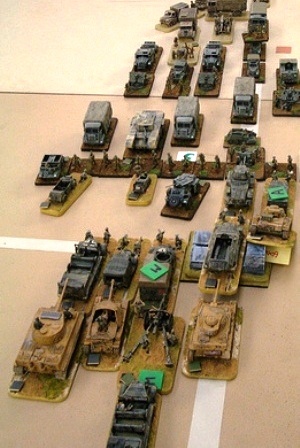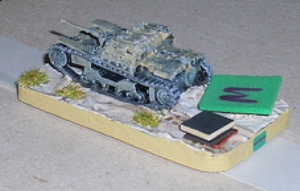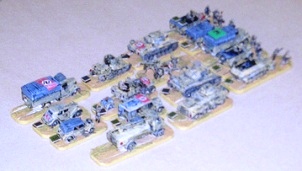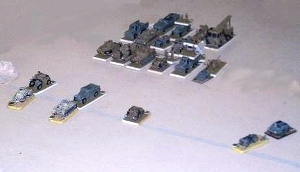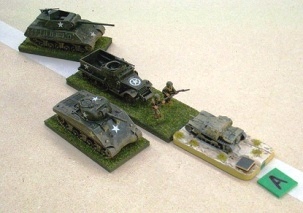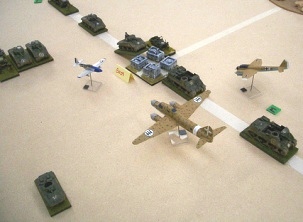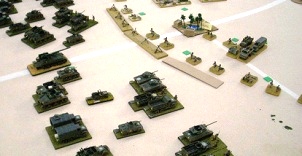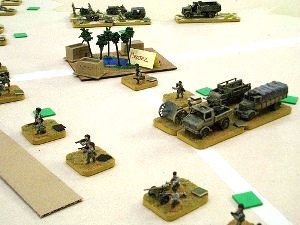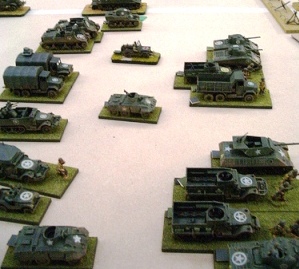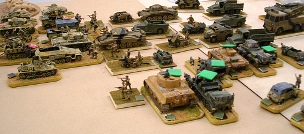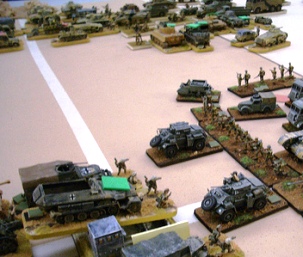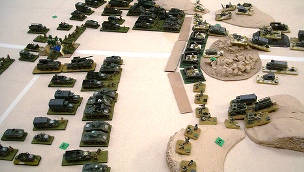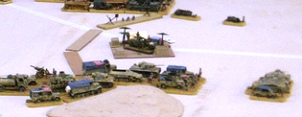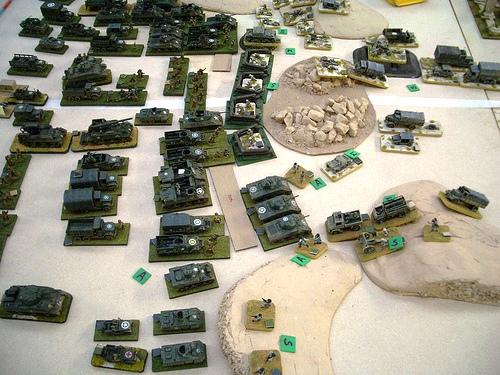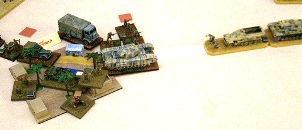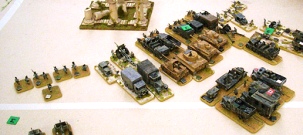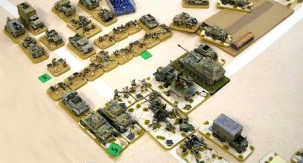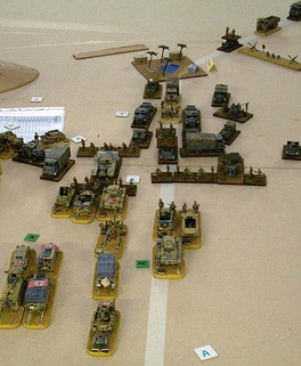|
Day 1 The new day was greeted by waves of American bombers flattening Medjez, and communications from our agents in Beja reporting endless columns of American tanks and trucks rolling past. The Blackshirt garrison of Medjez lost half its strength in this air raid, and hastily evacuated the town to occupy safer positions on the edge of the minefields. To our astonishment a group of Luftwaffe Nachtjager flew overhead, evidently on a reconnaissance mission, and returned confirming that at least one US Armoured Division was heading our way in road column, preceded by light armoured vehicles. The insult! They were just trundling along expecting us to run away! This was not to be borne; whilst we may have lacked vehicles, weapons, ammunition and training, at least we had the blood of Rome in our veins! I immediately ordered our L33 battalion up the road to show them what we were made of. As the tankettes sped up the road, our airforce made yet another surprise appearance as waves of SM79 and Do 17 bombers flew overhead on their way to Beja. Their sadly depleted numbers returned later. Our tanks made contact with the Americans halfway between Beja and Medjez and fought a spirited action, brushing aside the Stuarts and attacking the leading US armored infantry battalion. The Americans were thrown into confusion and clumsily deployed an entire Combat Command to deal with threat. The L33s then conducted a model delaying action, keeping just out of reach of the vengeful US tankers and at nightfall fell back through Medjez, having kept the Americans over 20km from the town.
|
|
